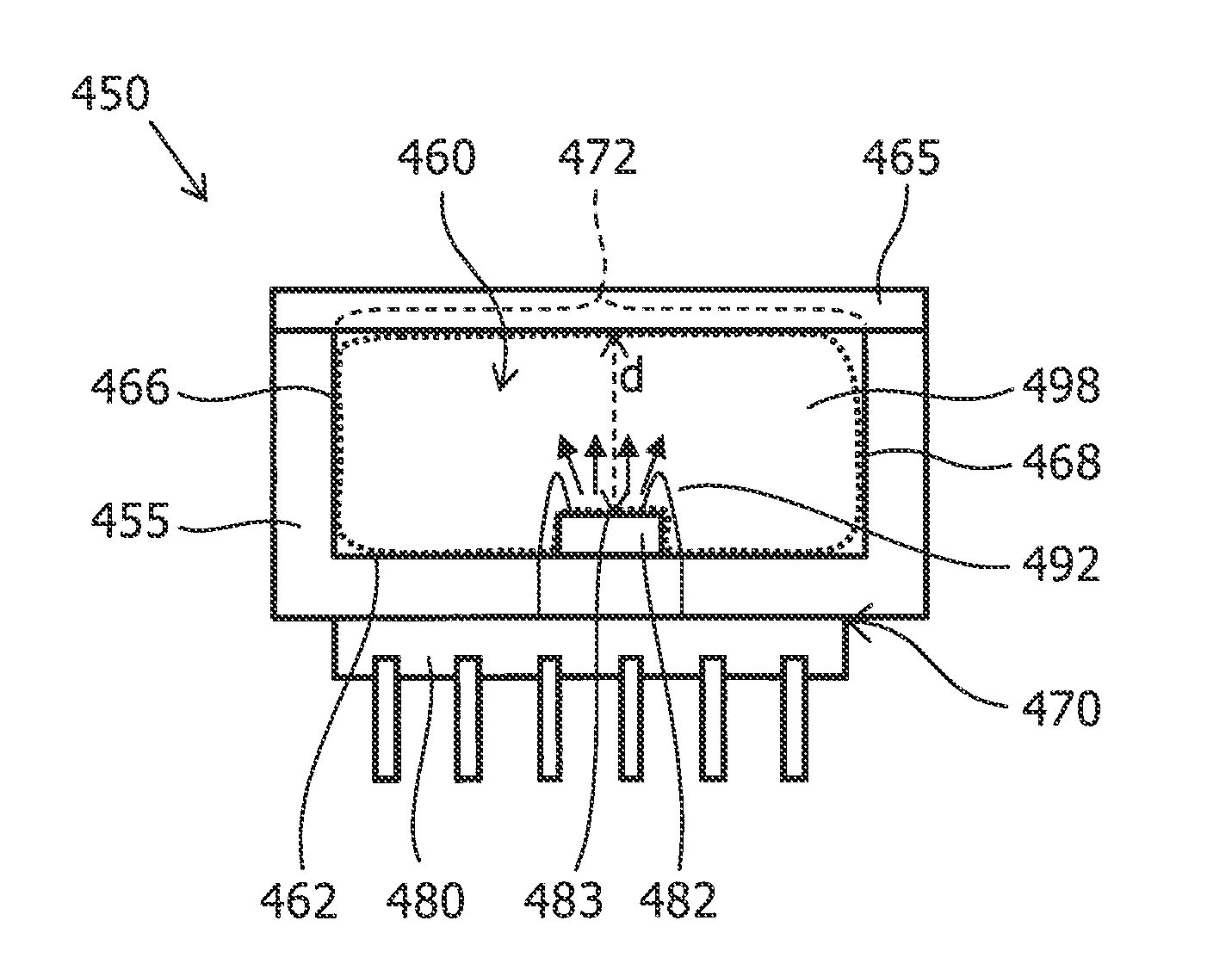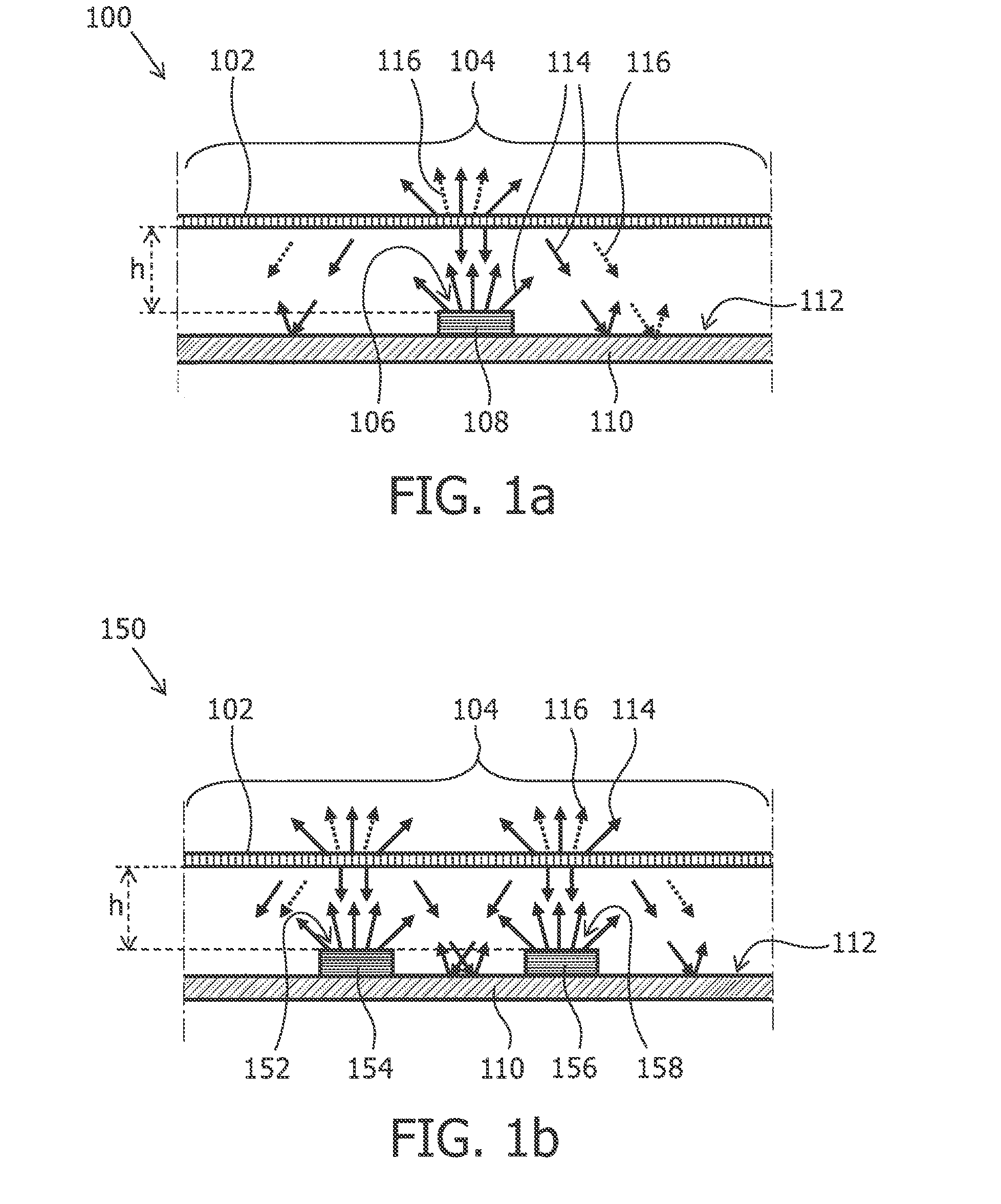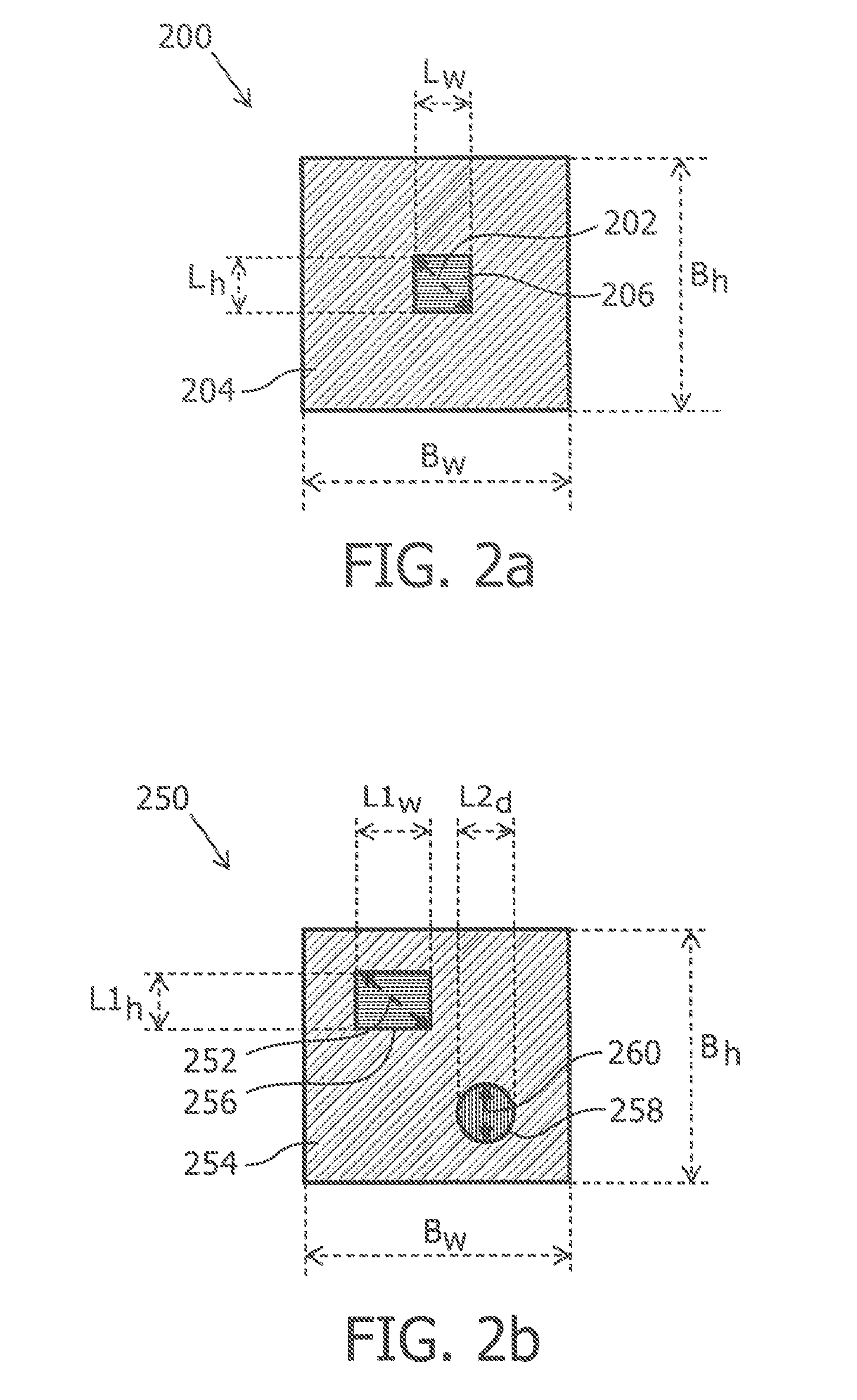Light emiting module, a lamp, a luminaire and a display device
a technology of light emitting modules and luminaires, applied in semiconductor devices, light source combinations, lighting and heating apparatus, etc., can solve the problems of poor recycling efficiency of light directed back from the luminescent layer to the led, inefficiency of light trapped inside the light emitting device, so as to reduce the cost level of the display device
- Summary
- Abstract
- Description
- Claims
- Application Information
AI Technical Summary
Benefits of technology
Problems solved by technology
Method used
Image
Examples
Embodiment Construction
[0086]A first embodiment is shown in FIG. 1a which shows a cross-section of a light emitting module 100 according to the first aspect of the invention. The light emitting module 100 has a light exit window 104. The light exit window 104 in this embodiment is formed by a luminescent layer 102 which comprises luminescent material. The luminescent material converts at least a part of light of a first color range 114 which impinges on the luminescent material into light of a second color range 116. At another side of the light emitting module 100 a base 110 is provided which has a light reflecting surface 112 that faces towards the light exit window 104. On the base 110 a solid state light emitter 108 is provided which emits, in use, light of the first color range 114 towards a part of the light exit window 104. The base is typically provided with electrode structures to contact the dies or plurality of dies of the solid state light emitter 108 to provide electrical power. The electrode...
PUM
 Login to View More
Login to View More Abstract
Description
Claims
Application Information
 Login to View More
Login to View More - R&D
- Intellectual Property
- Life Sciences
- Materials
- Tech Scout
- Unparalleled Data Quality
- Higher Quality Content
- 60% Fewer Hallucinations
Browse by: Latest US Patents, China's latest patents, Technical Efficacy Thesaurus, Application Domain, Technology Topic, Popular Technical Reports.
© 2025 PatSnap. All rights reserved.Legal|Privacy policy|Modern Slavery Act Transparency Statement|Sitemap|About US| Contact US: help@patsnap.com



